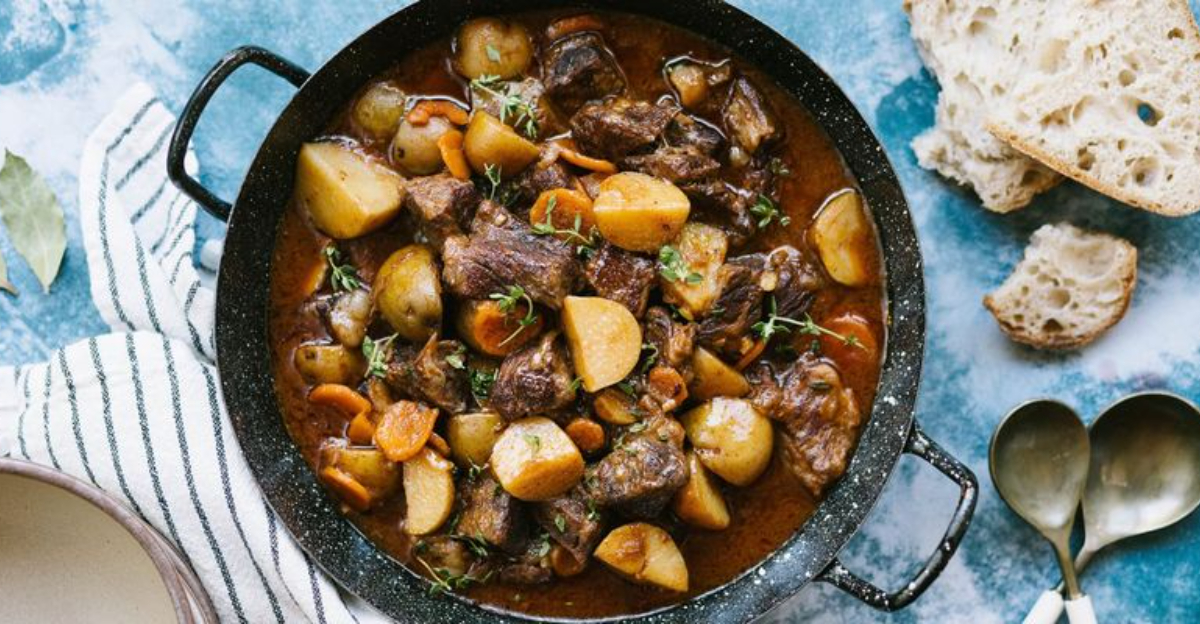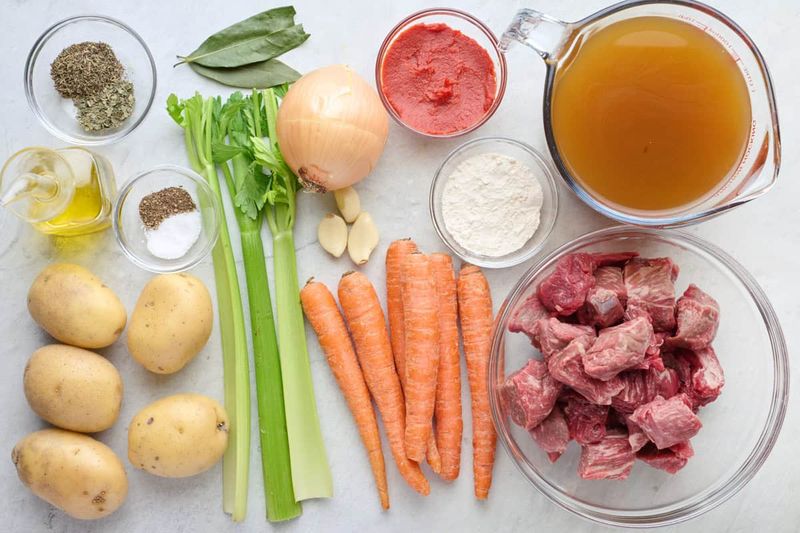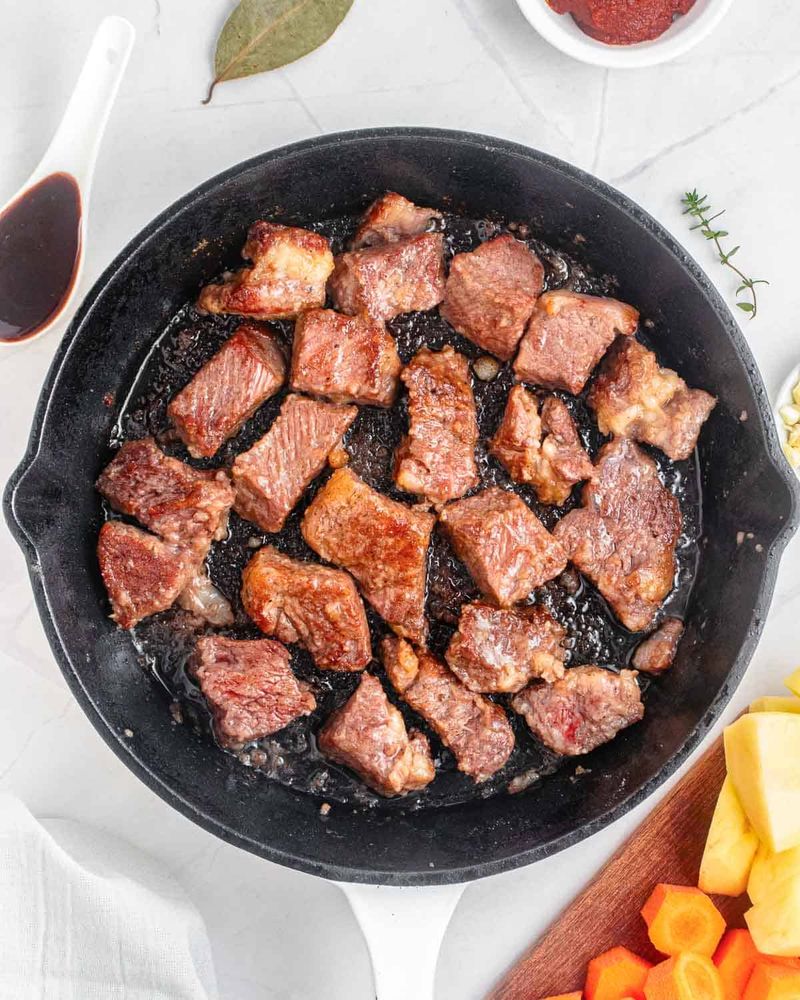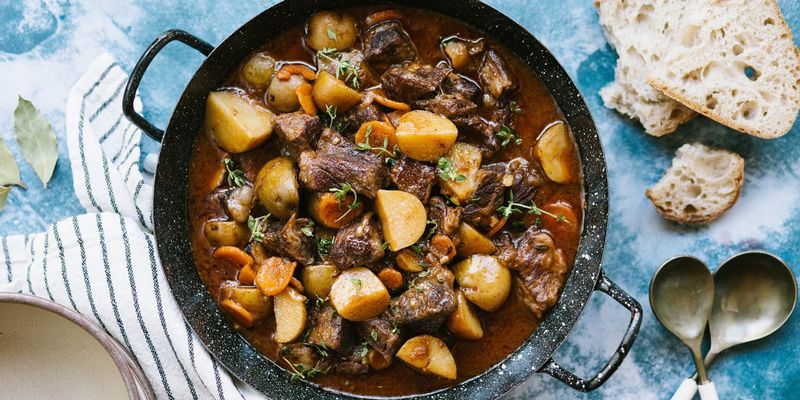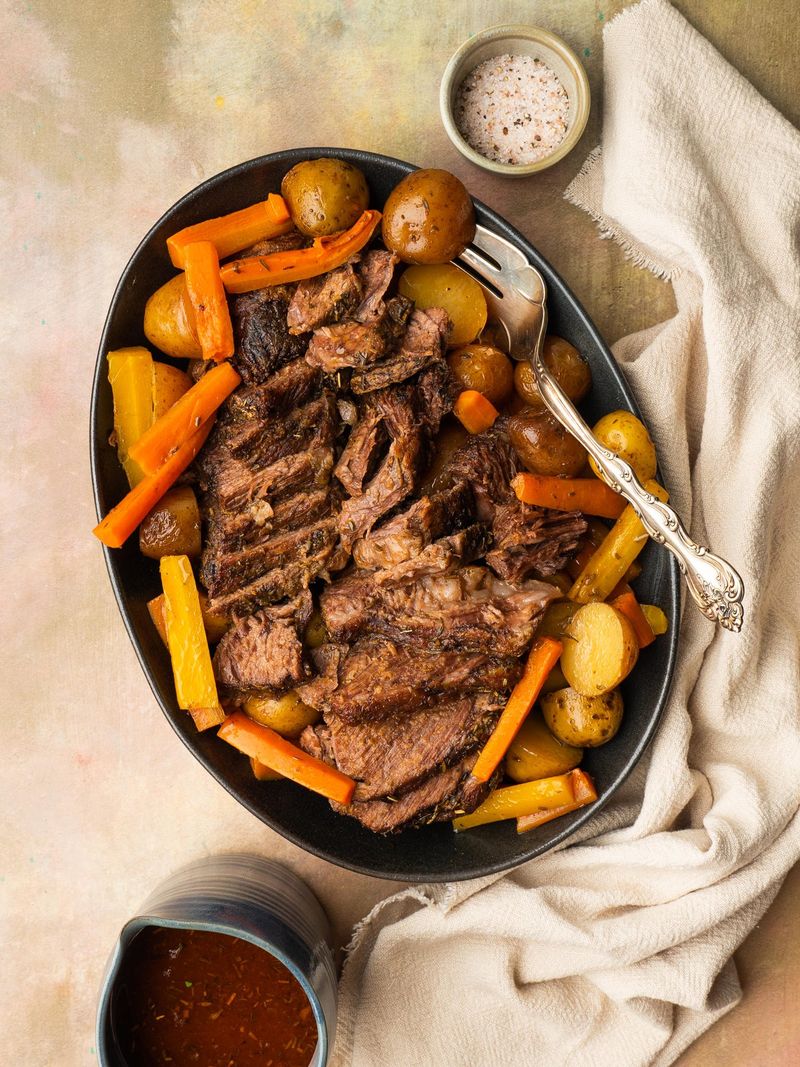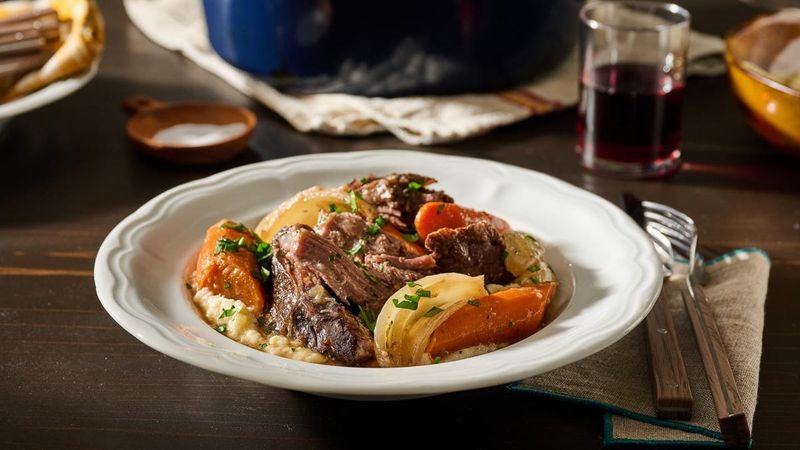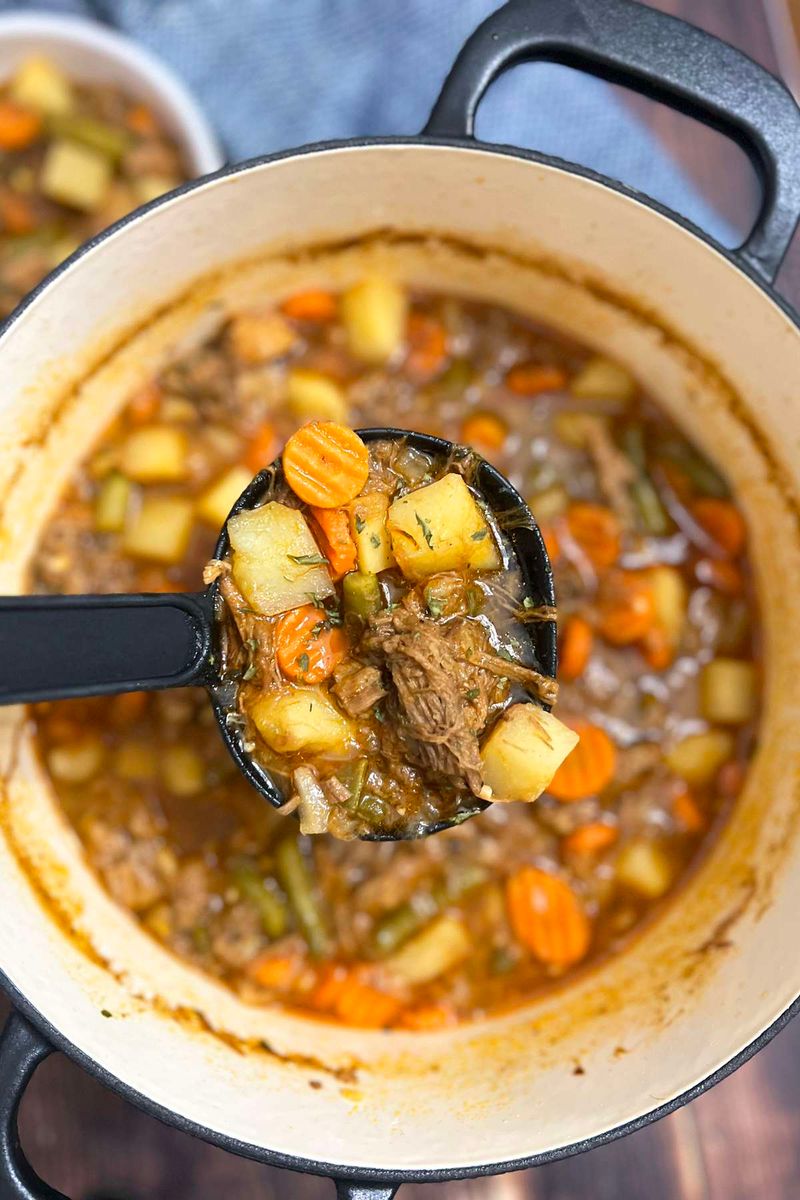In the culinary world, few debates are as delicious as that between a hearty stew and a perfectly roasted dish. To settle the score, we decided to cook both side-by-side, examining each step and comparing the results. From the ingredients to the final taste test, join us as we explore the nuances of these classic comfort foods.
1. The Ingredients
Both meals begin with the same humble lineup — beef, onions, carrots, and potatoes. But while the base may look similar, it’s how each dish treats its ingredients that tells a different story.
The stew dives into a flavorful broth, ready to soak up herbs and spices, while the roast prefers to bask in the dry heat of the oven until caramelized perfection.
The one-pot stew leans on moisture. It thrives on simmering slowly in stock or wine, transforming even the toughest cuts into tender bites. The roast, on the other hand, is all about contrast — a crisp exterior that hides juicy, flavorful meat inside.
In short, both recipes celebrate comfort food in their own way. The stew is your cozy Sunday sweater, while the roast feels more like your favorite tailored coat — simple ingredients, styled differently, but equally satisfying.
2. How Much Prep Time Each Really Takes
When it comes to effort, the stew wins the “throw it together and walk away” award. There’s minimal chopping, a quick sear, and then it’s mostly hands-off. You can practically do a load of laundry, answer emails, and still come back to a bubbling pot of happiness.
The roast requires a bit more forethought. Between trimming the meat, seasoning it, and arranging vegetables just right, you’ll feel like you’re setting the stage for a kitchen performance. It’s not complicated — just more precise. You’ll want to check in now and then, basting to keep that perfect golden-brown crust.
If your day’s already packed, the stew is your weeknight savior. But when you’ve got a lazy afternoon and want to fill your home with irresistible aromas, the roast makes the process feel like a celebration rather than a chore.
3. Making the One-Pot Savory Stew
There’s something deeply satisfying about throwing everything into one pot and letting time do the magic. After browning the meat for a rich base, you toss in your vegetables, herbs, and a splash of broth or wine. Soon, your kitchen smells like home — warm, savory, and comforting.
The secret to a great stew is patience. The longer it simmers, the more the flavors meld together into something that feels slow-cooked and soulful. Every bite tastes like a hug in a bowl, with tender vegetables that practically melt on your spoon.
Cleanup is also a dream. One pot, minimal mess, and plenty of leftovers for tomorrow’s lunch. The stew doesn’t just save you time — it rewards you for taking it easy, reminding you that simple cooking can still taste extraordinary.
4. Crafting the Perfect Oven Roast
The magic of a roast begins long before the first bite. There’s the satisfying sizzle as you sear the meat, locking in flavor before it ever sees the oven. Then comes the ritual of seasoning — a mix of salt, pepper, garlic, and maybe a touch of rosemary that makes your kitchen smell like a family gathering.
As it roasts, you can’t help but peek through the oven door, admiring that deep, golden crust forming. The vegetables on the tray caramelize in the drippings, creating a symphony of flavors that no stovetop can quite replicate.
By the time it’s done, the roast feels like an event. Carving into it reveals juicy layers that are as beautiful as they are delicious. It’s not just a meal — it’s a small victory for anyone who loves seeing their effort pay off in taste and texture.
5. Flavor Test
Tasting both side by side is like comparing two moods. The stew delivers deep, unified flavors — every spoonful blends into a single comforting note that wraps around your taste buds. It’s warm, soft, and endlessly forgiving.
The roast, though, plays a different tune. Each bite stands proudly on its own — the meat rich and smoky, the vegetables sweet and crisp, and the seasoning sharp where it needs to be. It’s all about contrast and clarity.
There’s no true winner here; it depends on what you’re craving. Need something cozy after a long day? The stew wins. Want something bold that makes you feel like you’re dining at a rustic farmhouse? The roast takes the crown. Both hit the flavor jackpot — just in totally different ways.
6. Tender vs. Crispy: A Texture Showdown
The stew practically melts in your mouth. Every piece of meat gives way with the gentlest touch of a spoon, and the vegetables — once crisp — have transformed into buttery-soft morsels. It’s the kind of meal that warms you from the inside out.
In contrast, the roast celebrates variety. The outer crust is beautifully crispy, while the inside stays juicy and tender. The vegetables caramelize at the edges but keep a satisfying bite. It’s the meal for those who want texture in every forkful.
Together, they prove there’s no single definition of “perfect” comfort food. Some days you crave softness; others, you want crunch. The beauty of cooking both is realizing that texture isn’t just about taste — it’s about mood.
7. How the Nutrition Stacks Up
While both dishes feel indulgent, their nutrition profiles tell a slightly different story. The stew, with its broth base, tends to be lighter in calories and fat. Plus, the slow simmer helps lock in nutrients from the vegetables, making every bite a bit more wholesome.
The roast isn’t necessarily a “guilty pleasure,” though. It offers lean protein, especially if you trim visible fat and skip heavy gravies. Roasting brings out natural sweetness in vegetables, often without needing added sugar or butter.
Ultimately, it’s about balance. The stew is great when you want something nourishing and hydrating, while the roast delivers a satisfying protein punch. Pair either with a side salad or whole grains, and you’ve got comfort food that’s both filling and mindful.
8. Leftover Potential
Leftovers are where both dishes truly shine. The stew almost improves overnight — the flavors deepen, the broth thickens, and every reheated bite feels even richer than the day before. It’s practically designed for meal prepping.
The roast, on the other hand, transforms. Thinly sliced meat makes the perfect sandwich filling, and leftover veggies can top a salad or become a side for breakfast eggs. With a little creativity, yesterday’s roast turns into today’s lunchbox hero.
Between the two, the stew wins for convenience, but the roast wins for versatility. Either way, you’re saving time, reducing food waste, and proving that good cooking doesn’t end when dinner’s over — it keeps on giving.
